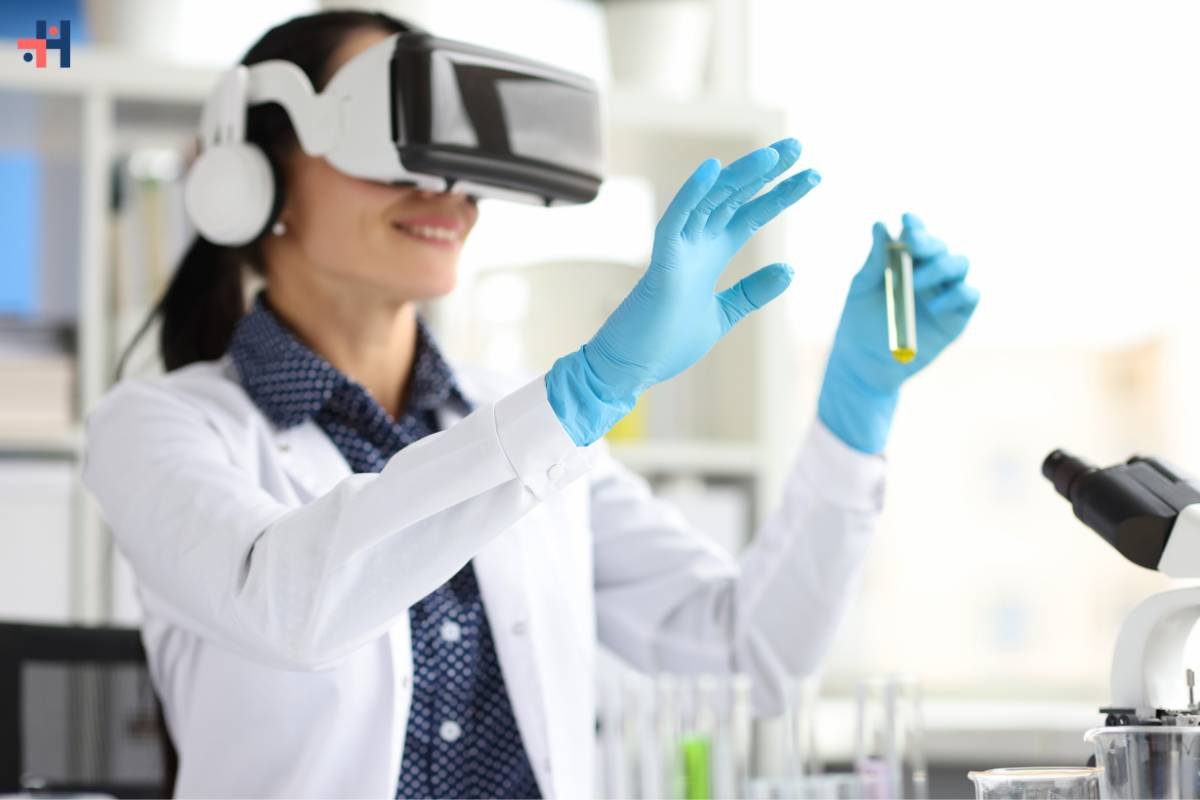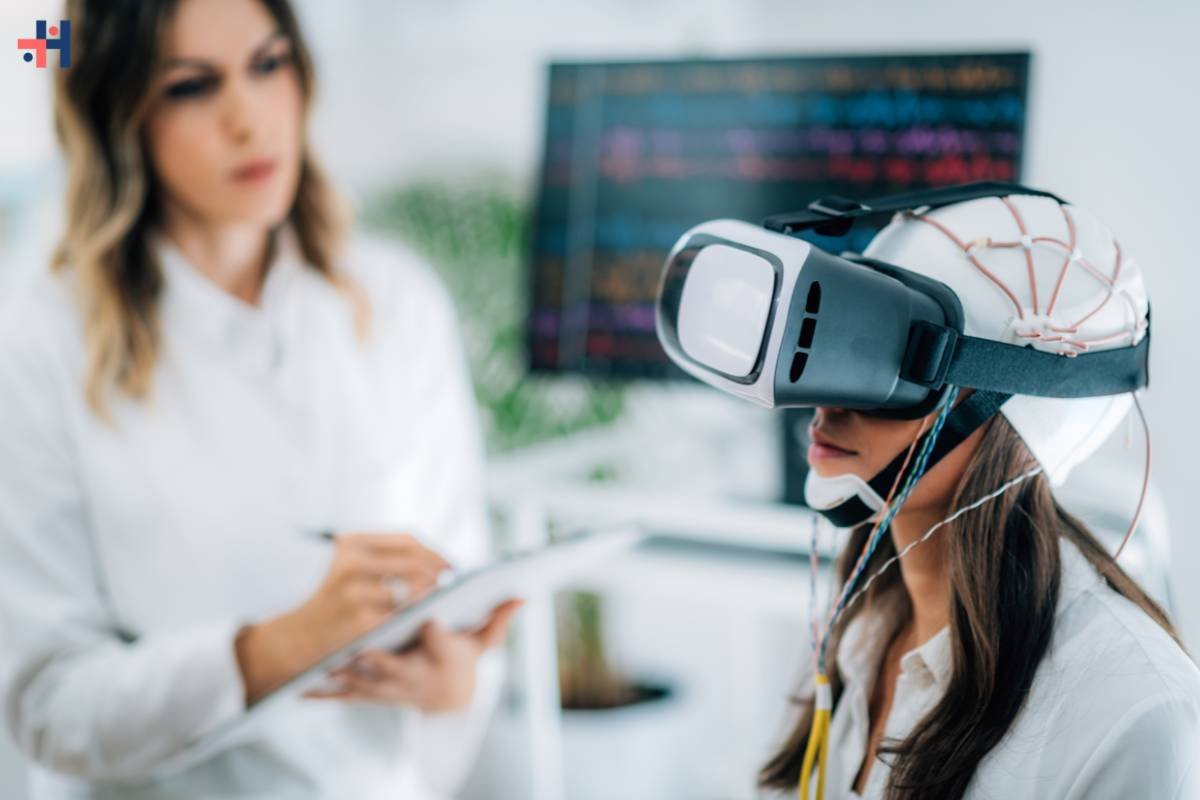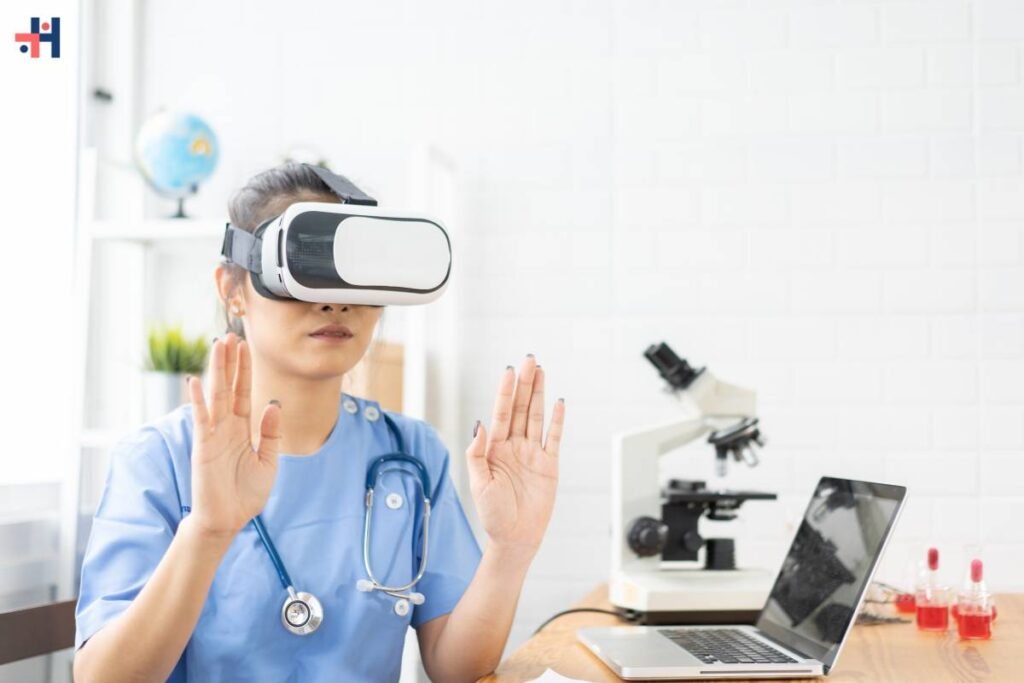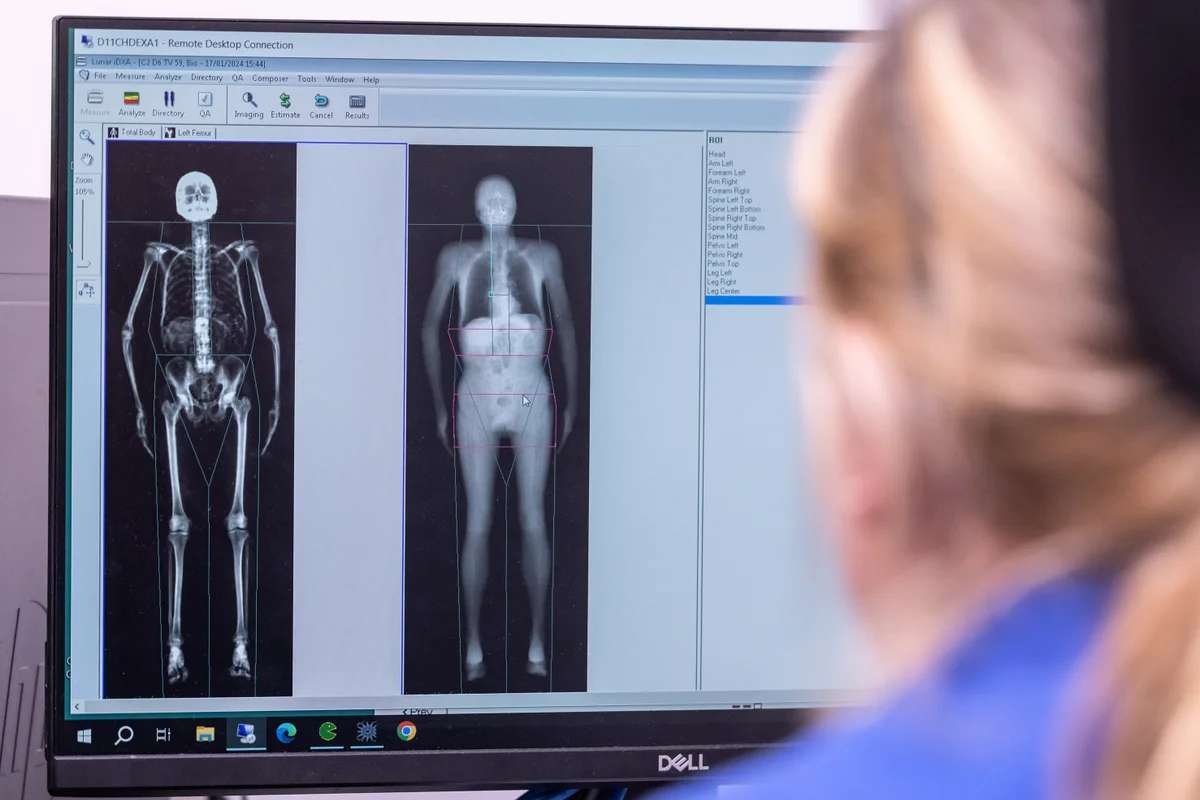Virtual Reality (VR) technology has emerged as a powerful tool with transformative potential across various industries, including healthcare. By immersing users in realistic, interactive environments, VR applications in healthcare are revolutionizing medical training, surgical planning, patient care, rehabilitation, and telemedicine. In this comprehensive guide, we will explore the diverse applications of VR in healthcare and examine how this groundbreaking technology is reshaping the landscape of medical practice.
1. Training and Education on VR Applications in Healthcare:

One of the most significant benefits of VR in healthcare is its role in medical training and education. Traditional medical education often relies on textbooks, lectures, and cadaver dissections, which may not provide hands-on experience or realistic scenarios. VR simulations offer a safe and immersive environment for medical students and professionals to practice procedures, hone clinical skills, and enhance decision-making abilities. From virtual anatomy lessons to simulated patient encounters, VR training modules provide invaluable learning opportunities that bridge the gap between theory and practice.
2. Surgical Planning and Visualization of VR Applications in Healthcare:
VR technology is revolutionizing surgical planning and visualization, empowering surgeons to explore anatomical structures and simulate complex procedures with precision and confidence. By converting medical imaging data into interactive 3D models, VR software allows surgeons to conduct virtual surgeries, identify optimal approaches, and anticipate potential challenges before stepping into the operating room. Moreover, VR-based surgical simulations enable multidisciplinary teams to collaborate effectively, streamline workflow processes, and improve patient outcomes through personalized treatment strategies.
3. Pain Management and Therapy of VR Applications in Healthcare:
In the realm of patient care, VR applications in healthcare are proving to be effective tools for pain management and therapy. Virtual Reality therapy involves immersing patients in immersive environments that promote relaxation, distraction, and sensory stimulation, thereby reducing pain perception and enhancing overall well-being. VR experiences tailored to individual preferences and therapeutic goals can alleviate chronic pain, postoperative discomfort, and psychological distress associated with medical procedures. Additionally, VR therapy has demonstrated efficacy in treating conditions such as phantom limb pain, fibromyalgia, and chronic migraines, offering non-pharmacological alternatives to traditional pain management approaches.
4. Patient Rehabilitation and Mobility:
For patients undergoing rehabilitation and physical therapy, VR technology offers innovative solutions to enhance mobility, functional recovery, and quality of life. VR-based rehabilitation programs utilize interactive games, exercises, and simulations to engage patients in therapeutic activities that promote movement, coordination, and balance. By providing immersive and enjoyable therapy experiences, VR facilitates greater patient engagement, adherence, and motivation, leading to more effective rehabilitation outcomes. Furthermore, VR-enabled mobility training can benefit individuals with neurological disorders, musculoskeletal injuries, and mobility impairments by simulating real-world scenarios and facilitating gait training in a safe and controlled environment.

5. Telemedicine and Remote Consultations:
With the growing demand for telemedicine and remote healthcare services, VR technology is playing a pivotal role in enabling virtual consultations, telepresence experiences, and remote patient monitoring. VR telemedicine platforms allow patients to interact with healthcare providers in immersive virtual environments, overcoming geographical barriers and enhancing the accessibility and convenience of healthcare delivery. Whether it’s conducting virtual clinic visits, remote diagnostic assessments, or collaborative treatment planning sessions, VR telemedicine solutions empower healthcare providers to deliver high-quality care and improve patient outcomes while reducing the burden of travel and wait times.
6. Patient Education and Empowerment through VR Applications in Healthcare:
Beyond clinical applications, VR technology is being utilized to educate patients, enhance health literacy, and promote self-management of chronic conditions. VR-based educational content allows patients to visualize disease processes, treatment options, and lifestyle modifications in a compelling and interactive format. By immersing patients in virtual environments that simulate daily activities, medical procedures, and health behaviors, VR empowers individuals to make informed decisions about their health and take an active role in managing their well-being. Additionally, VR-powered health education initiatives can address disparities in access to healthcare information and engage diverse populations with culturally relevant and linguistically appropriate content.
7. Challenges and Considerations in VR Applications in Healthcare:
Despite the promising potential of VR in healthcare, several challenges and considerations must be addressed to facilitate widespread adoption and maximize its impact. These include concerns related to data privacy and security, regulatory compliance, reimbursement policies, technical infrastructure requirements, and integration with existing healthcare systems. Moreover, issues such as user acceptance, training, and accessibility need to be carefully addressed to ensure equitable access and usability of VR technology across diverse patient populations and healthcare settings.
8. Future Directions and Opportunities in VR Applications in Healthcare:

As VR technology continues to evolve and become more sophisticated, the future of healthcare holds immense potential for innovation and advancement. Emerging trends such as augmented reality (AR), mixed reality (MR), and immersive haptic feedback systems are poised to further enhance the capabilities and applications of VR in healthcare. Moreover, advancements in artificial intelligence (AI), machine learning (ML), and data analytics are enabling personalized, data-driven approaches to healthcare delivery, diagnosis, and treatment planning. By embracing these technological innovations and fostering interdisciplinary collaboration, healthcare stakeholders can harness the power of VR to transform patient care, improve clinical outcomes, and create a more equitable and accessible healthcare system for all.
Conclusion:
Virtual Reality technology is revolutionizing healthcare delivery by offering innovative solutions for training, surgical planning, patient care, rehabilitation, telemedicine, patient education, and empowerment. As VR Applications in Healthcare continue to evolve and integrate into mainstream medical practice, its transformative impact on healthcare is poised to grow exponentially. By leveraging the power of VR, healthcare providers can enhance clinical workflows, optimize treatment strategies, and elevate the patient experience, ultimately leading to improved health outcomes and enhanced quality of life for individuals worldwide.









